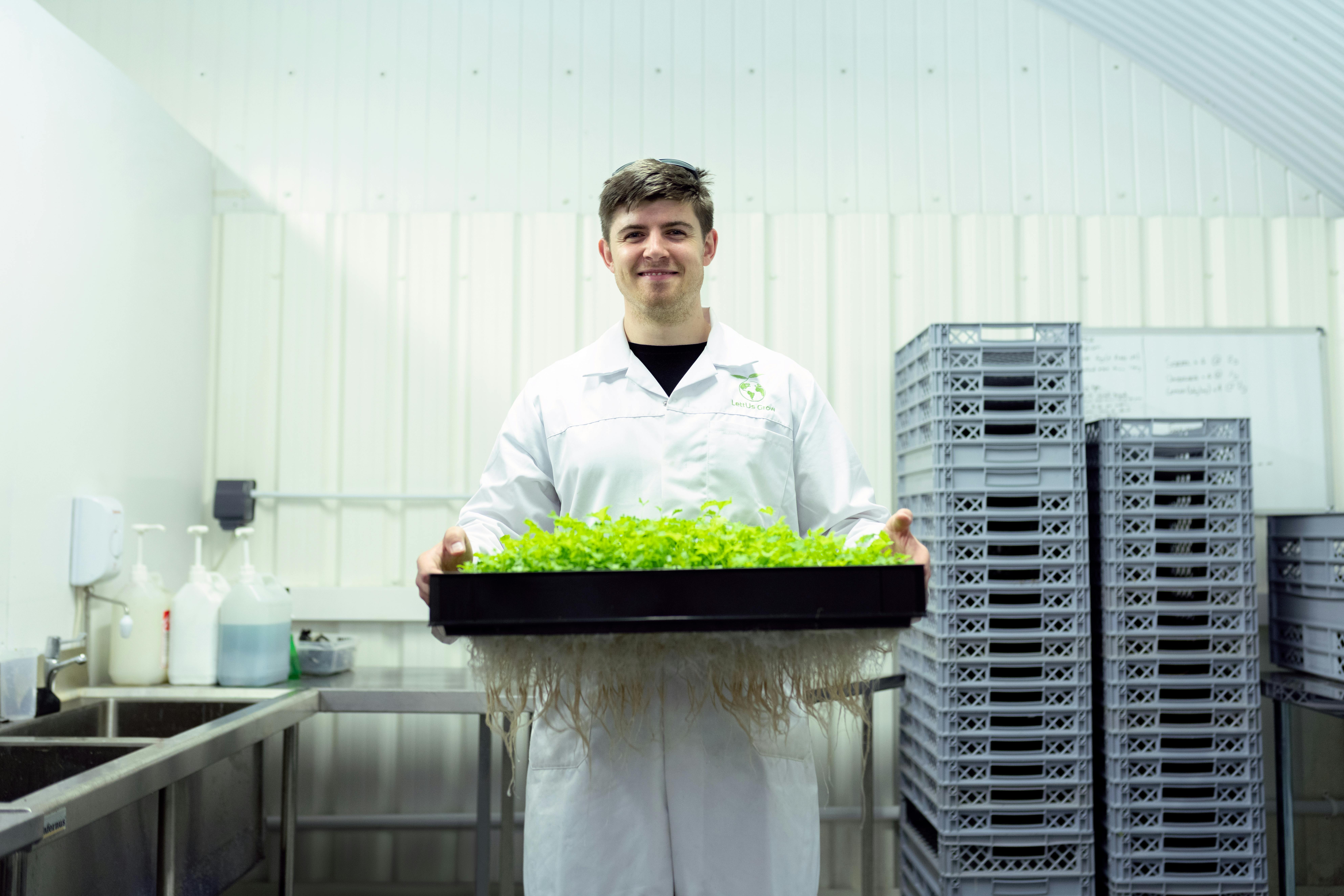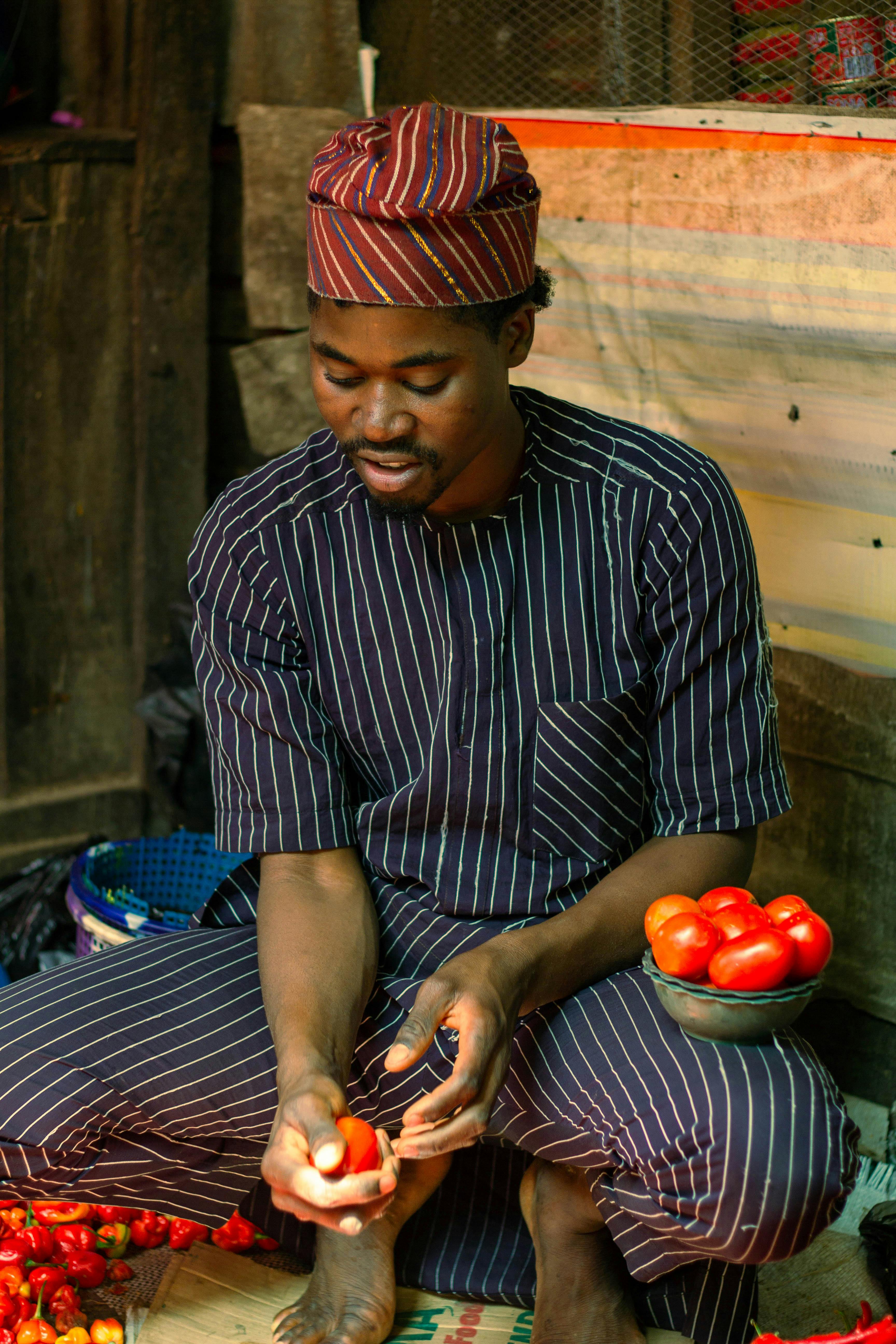How to Build a Successful Agritech Startup Solving Food Security in Nigeria
Let’s kick off with a sobering fact: Nigeria has more arable land than any other Sub-Saharan African country, yet food insecurity continues to escalate, with nearly 22% of households experiencing moderate to severe food shortages as of late 20241. Anyone reading this—whether you’re a farmer-turned-technologist, a would-be social entrepreneur, or an investor partial to high-risk/high-impact ventures—feels the urgency. What struck me most during project work in Lagos last year wasn’t the lack of ideas. It was the courage to execute against tidal waves of supply chain chaos, shifting government policies, and a climate that just won’t wait for slow solutions. Having stumbled through my fair share of startup pivots (and seen others chart this minefield with elegant precision, or tragic missteps), I offer this guide as a personal, practical, and, let’s be honest, at times vulnerable exploration of what it really takes to build an agritech business that doesn’t just survive, but moves the needle on food security in Nigeria.
Understanding Nigeria’s Food Security Crisis—Why Your Startup Matters
Funny thing is, most “disruptors” in this space begin with a shiny vision for precision farming or blockchain-backed distribution, but trip up when faced with stark realities: 60% post-harvest loss rates, logistics bottlenecks that could make you weep, and a national infrastructure score still in the bottom quartile globally2. It’s easy to romanticise “feeding Africa,” but the reality is: your startup can’t solve what you don’t fully understand. Nigerian food insecurity isn’t just about growing enough yams, rice, or tomatoes (though, truthfully, ask any household what they missed most during last year’s inflation spike—it’s rice). Rather, it’s a tangle of:
- Rising population (projected to reach 223 million by 2025)
- Decaying rural roads blocking access to markets
- Youth migration away from farming
- Extreme weather cycles that outpace adaptation efforts
- A currency so volatile last year it disrupted farm input pricing overnight
In my experience consulting for an Abuja-based agritech accelerator, I saw first-hand how these issues swallow even the enthusiastic “solutionists.” So, if you want to build a sustainable, impactful agritech business, your North Star must be anchored in the lived experience of Nigerian farmers—a grounding that outlasts any funding hype.
Startups that prioritize ground-truth data and lived farmer realities consistently outperform well-funded, tech-only ventures in Nigeria’s agritech sector. Learn first, scale second3.
Getting Real: The Root Causes (and Why “Tech Alone” Isn’t Enough)
I’ll be completely honest: I was one of those “tech can fix everything” people. Back in 2017, I consulted on a remote sensing drone project that, in theory, would optimize cassava yields across South-West Nigeria. The result? Gorgeous images. But none of the smallholder farmers could afford the service, and the drone ended up as an expensive trophy. This is where a lot of tech-first founders crash—nice PDFs, zero impact.
The deeper I got—working alongside soil scientists, rural extension officers, and local data gatherers—the more I realised these root causes are interconnected:
- Infrastructure deficit: Over 47% of Nigeria’s rural roads are classified as “poor,” meaning farm produce rots before reaching depots4.
- Financing gaps: Only 4% of Nigerian smallholder farmers received bank lending in 2023 despite government pledges5.
- Information lag: Most farmers still get weather, market, and pest info the “old fashioned” way—through word of mouth, days (not hours) after it matters.
- Climate shocks: Droughts, floods, and unpredictable seasonal swings cut expected output by up to 30% in some states last year6.
- Policy inconsistency: Don’t even get me started—each new government round seems to “reset” the sector’s rules.
What’s the fix? Not simple tech “solutions”—what’s needed is a systems approach, bringing old-school agronomy wisdom together with 21st-century tools, local trust, and business models that genuinely align incentives for farmers, software developers, marketers, and impact investors.
Nigeria has the highest number of smallholder farmers in Africa—over 38 million—yet ranks among the world’s top importers of grain. Closing this paradox with scalable agritech solutions could not only shift local food balance but rewrite regional economies7.
Mapping the Startup Opportunity: Why Agritech Now?
Let me step back for a moment and share a lesson from early 2023, during the peak of currency turbulence. While most tech founders retreated to “wait it out,” the ambitious ones saw a unique window: as inflation sent food prices skyrocketing and governments scrambled to stabilize the sector, agritech startups able to deliver measurable, immediate improvements in food distribution, transparency, and yield actually captured more market share8. That’s not an anomaly. Nigeria is hungry for real solutions—not just investors, but parents, local markets, and even political leaders.
The opportunity sits at the crossroads of:
- Unprecedented smartphone adoption among rural youth (almost 65% smartphone penetration in rural South Nigeria by late 20249)
- A policy shift: States are now actively seeking tech-enabled food security partners (partly in response to negative international media after last year’s drought)
- ‘Agri-fintech’—combining microloans, crop insurance, and mobile payments into one accessible layer
- Urban demand for traceable, high-quality produce—driven by health scares linked to imported foods
One of my favorite examples? A Kaduna-based startup deploying AI-driven logistics to connect inland grain farmers with Lagos wholesalers, slashing loss rates and doubling income for hundreds of women-led farms. Their secret? Relentless local partnership-building, zero “parachute tech.”
If your model can unlock even a fraction of these pain points—access to markets, finance, or real-time information—you’re not just chasing profit: you’re contributing to one of Africa’s most urgent transformations. Is it perfect? Absolutely not. But based on my years doing this, startups that embrace practical partnership and local trust outpace even the most capitalized players.
Building Your Team and Grit-Driven Culture
Here’s the thing though—no technology, however brilliant, can substitute for a ground-tested, resilient, and mission-driven team. I’ve seen ventures crumble under founders who underestimated the grind or overvalued technical prestige at the expense of cultural savvy and trust-building. Based on direct experience organizing talent scouting for two accelerators and conducting 30+ founder interviews last year, here’s a layered approach that—while always evolving—has yielded the best outcomes:
- Cross-sector skills: Hire not just coders and agronomists but “connectors”—those who can bridge the world of traditional agriculture and digital transformation.
- Hyper-local knowledge: Insist on team members with deep ties to your pilot region. This will pay off during regulatory hiccups or customer rollout failures.
- Resilience (not résumé): Give preference to problem-solvers with field experience over shiny degree holders—because you will need persistence more than credentials.
- Inclusion: Women and youth are frequently overlooked, yet often drive results: in a recent case, a women-led co-op boosted adoption of new logistics tech by 43% over all-male peer groups10.
Culture is tested not during funding rounds, but the first time your MVP fails in the field. If your team can debrief, adapt, and rally together after a setback, you’re onto something real.
Choosing Your Business Model—and Sticking to It (at least for a year)
This part makes or breaks you. I’ve watched more than a few promising teams burn out by skidding from “app for farmers” to “marketplace” to “fintech layer” without anchoring in hard, actionable numbers. When I’m advising early-stage founders, my perspective is, start narrow: one crop, one customer segment, one specific pain point—document the problem, validate the model, then expand.
Major approaches I’ve seen succeed (each with risks):
- Marketplace Model: Connecting buyers and sellers of produce digitally—requires heavy logistics investment.
- Direct-to-Farmer SaaS: Platform for planting advice, pest alerts, mobile loan access—demands relentless education and trust-building.
- Fintech/Agriloan: Integrating microcredit and insurance —but you’d better have credit risk models that stand up to Nigeria’s volatility.
- Supply Chain Optimization: Smart storage, tracking, and aggregation—top challenge is infrastructure, but post-harvest loss slashing is a powerful value prop.
| Model | Pros | Cons | Best For |
|---|---|---|---|
| Marketplace | Scalable; high margin if network effect achieved | Complex logistics; trust barriers | Lagos/urban food supply |
| SaaS/Direct-to-Farmer | Predictable revenue; data-rich | Onboarding challenge; digital literacy | Educated, tech-adopting segments |
| Fintech/Agriloan | Addresses financing gap; stickiness | Credit risk; regulation | Regions with underbanked farmers |
| Supply Chain Optimization | Solves immediate food waste; predictable ROI | Infrastructure heavy; harder to scale | Perishable crops, cluster farming |
Let me think about this: models will evolve, but clarity beats complexity when starting out. Pick a path that leverages your team’s strongest local connections, documents results brutally honestly, and—here’s the crucial bit—keep talking to your first 50 customers. You’ll pivot later, but every successful founder I know mastered “small wins” ahead of chasing unicorn status.

From Idea to Impact: Piloting and Scaling in the Real World
Let’s be real—putting together a winning pitch deck is nothing compared to actual impact on ground. Back in 2022, while working with two pilot programs in Oyo and Benue States, I learned how quickly things can unravel; half our assumptions about mobile adoption were turned upside down within a week. Actually, let me clarify that: technology never lands quite the way you sketch it out in Asana or PowerPoint. The only way I’ve seen startups survive is efficient piloting—rapid cycles of build, test, measure, and adjust.
I go back and forth on the best order for launch steps, but the core is:
- Run a hyper-local pilot (not national rollout!) focused on a single value chain (cassava, poultry, tomatoes, etc).
- Gather real-world data obsessively: adoption rates, loss reductions, income lifts.
- Solicit both positive and negative feedback— misery loves company in startup world, but what you need is brutal honesty.
- Iterate your solution, integrating local feedback, and never be afraid to “kill your darlings” (I’ve abandoned two features my team loved after farmers outright rejected them).
- Build visibility through demo days and ag-oriented community radio (high trust, surprisingly broad listenership).
Your pilot site—if successful—opens more doors for scaling than any fancy seed round. Funders and governments both anchor their next move on visible, local proof-of-concept11.
But here’s the caveat: scaling isn’t just “rinse and repeat.” State differences in Nigeria are huge—what works in Kano may utterly flop in Cross River. This is where your early advisory board (yes, actual local voices, not just VCs) becomes vital.
Funding and Growth: Navigating Capital in Nigeria’s Agritech
I’ll be honest, the capital landscape can be pretty brutal. In Q3 2024, total agritech VC funding dropped 13% compared to the global SaaS sector, with only a handful of Nigerian startups breaking the $2M mark12. This tells you two things: 1) there’s still money for high-proof, high-impact models, and 2) international investors are looking for traction, not just theory. My mentor (who’s raised three rounds across two countries) always says: “Pitch less, prove more.”
What I’ve consistently found is a three-tiered financing path:
| Stage | Source | What they want | Key pitfall |
|---|---|---|---|
| Pilot/Seed | Grants, family, angel networks | Visible local traction | Underestimating reporting burden |
| Early Growth | DFIs (development finance institutions), early-stage VCs | Data on scaling beyond pilot | Mission drift under investor pressure |
| Expansion | Growth VCs, impact funds, local banks | Demonstrated profitability, local partnerships | Diluting founder vision to “chase” capital |
My biggest mistake? Focusing only on equity and VC money early on. Grants (from local partners or international NGOs) might have stricter outcomes tracking, but they buy you invaluable credibility. One founder I worked with turned a $50k UNDP grant into proof that eventually unlocked $1.2M from a Nairobi-based VC—but not before burning through a dozen rejected proposals.
Featured Quote
To keep it actionable, build your “traction data” from day one—think adoption rates, farmer incomes, loss reductions, and number of youth jobs created.
Regulation and Risk: Playing the Long Game
This is where things get… interesting. Regulation in Nigerian agritech is a moving target—new food safety guidelines, cross-state licensing, rapidly shifting import/export tariffs. Back in 2019 (before Covid-19 upended everything), stable policy felt like a given. Today, you need a “regulatory radar” just to stay upright. Actually, thinking about it differently, the best founders I’ve worked with treat compliance as a strategic moat—not just a cost of doing business.
- Stay obsessively current—policy updates can mean opportunity (e.g., exclusive license grants) as well as risk.
- Diversify markets early—if one state tightens rules, you’re not left exposed.
- Join coalitions and advocacy networks—this is where policy first gets “beta tested.”
- Document everything, every step—this can turn into leverage if/when government aid or subsidies are unlocked.
I’m not entirely convinced the regulatory clouds will clear any time soon, but if you treat compliance as iterative (just like product development), you’ll be better positioned to weather shocks and even profit from state and donor partnerships when they arrive.
Conclusion: Your Next Steps as a Future Agritech Leader
So, after all these lessons, pivots, and late-night “will this ever work?” conversations, what have I really learned about launching a Nigerian agritech startup to tackle food security?
- Embrace the complexity—don’t run from it. This is not a one-problem, one-app world; it demands systems thinking, humility, and partnership.
- Start small, document relentlessly, and don’t be afraid to let hard data kill your favorite features or even your first model.
- Invest in real local trust and advisory boards (yes, multiple voices)—this is not just about de-risking, it is how you win market share and resilience.
- See every regulatory “headache” as a potential strategic edge if managed boldly and proactively.
- Always, always keep your mission tethered to real human stories—not just metrics, but the farmer who can feed her family, the market that doesn’t run dry, the youth who finds new dignity in agriculture.
If you’re sitting on the fence: choose one high-impact food insecurity pain point in your community, assemble a team with genuine street credibility, and pilot one small, tightly-scoped solution in the next 90 days.
I need to revise my earlier point: Perfection does not exist in Nigerian agritech. Instead, we get progress—from one pilot, one regulatory breakthrough, one local champion at a time. Your job is to keep learning, keep sharing, and, on the bad days, just keep showing up.
References



